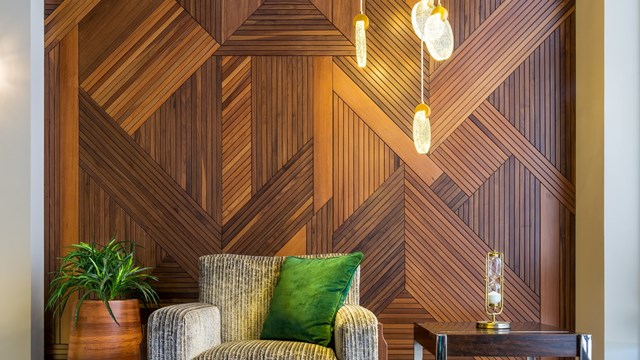Years ago, when you bought a co-op or condo apartment, you looked for a unit that had the right number of bedrooms and bathrooms, a perfectly-sized kitchen, and some great living space. For the longest time, that ideal combination was all an apartment needed to attract a buyer to a particular building or association. As property values increased, and as developers built more and more new multifamily developments however, they needed a way to draw homebuyers away from one building and over to theirs. And so began a battle of the multifamily Joneses. Building A had the state-of-the-art gym, so Building B added a gym and a movie screening room. Building C added all of that and then some, including a private personal trainer on-call at nearly any hour of the day.
Amenities Arms Race
How common is this tale of dueling amenities? Common enough that last April, Forbes magazine featured an article on condo amenities one-upmanship and how it’s fueling sales in high-end high-rises across many urban markets. Author Beth Weinberg explained that the newest lure for high-rise residents in New York City is a built-in supermarket. She reported that six specialty food stores had opened in the city within the year in mixed-use residential/commercial spaces. And the trend is hardly exclusive to Gotham; in just one example, a 100-unit condominium and loft development in Vancouver shares space with a Choices Market.
“Buyers are hungry for the most comprehensive amenities ever seen in New York condominiums,” says Beth Stern, a senior sales director with the Corcoran Sunshine Marketing Group. “Likewise, developers want to distinguish their projects with unique amenity spaces and best-in-class services,” she says. For example, at the new Halcyon condo building on East 51st Street, HFZ Capital Group made the decision to move the building amenities all the way to the 21st and 22nd floors, which could have been valuable residential real estate. “However, they felt that offering amenities with spectacular views, bathed in light, would ultimately create tremendous value. In particular, the Sky Lounge, Aqua Spa, 52-foot lap pool, fitness center, and Movement Studio feature floor-to-ceiling windows.”
The market’s emergence from the recent recession hasn’t changed the development of amenities either, just the final product. “Amenities help in both good and bad markets,” says Stern. “In the most recent real estate cycle, we are seeing developers think differently about the type of amenities they are offering. It isn’t necessarily about more, it’s about creating thoughtful multi-use amenities that are both efficient and provide versatile spaces for residents to do anything from yoga to host a formal dinner party.”
Jacky Teplitzky, a licensed associate real estate broker in New York and Florida with Douglas Elliman, has been in the business for 17 years and remembers when the most luxurious amenity that a building could offer was a concierge. “Whether or not the building had a doorman was the only thing that was really asked about,” she says. “Today, especially with new construction, you have to differentiate yourself—but what you offer depends on the target market for your building. If it’s families, the amenity will be a children’s playroom. If it’s yuppies, it will be WiFi or an outdoor theater.”
These days, catering to fitness enthusiasts is a high priority among developers. For example, Stephen Alton, founder and principal of Stephen Alton Architect, P.C. in New York City says that the Chelsea Landmark building, located at 55 West 25th Street, is a great example of how golf simulators are being incorporated into luxury spaces. Buildings at 25 Broad at the Exchange, Arias Park Slope and The Aldyn also offer golf simulators. The Victory at 561 Tenth Avenue takes it one step further and offers a driving range and a three-hole putting green. “Developers love golf simulators because they don’t take up too much space, i.e. real estate, and residents love them,” he says.
Rock climbing walls have become increasingly popular as well. Both the Aldyn and 10 Hanover Square offer them to their residents.
The River Club of New York at River House on the Upper East Side offers its owners their own restaurants, three squash courts, event spaces, a pool, two tennis courts, a ballroom and library and, for skating buffs, an ice-skating rink. All exclusive, all on-site. “Of course, River House is a bird unto itself,” says Alton. “It has the most exclusive entry—they allegedly turned down Madonna—and it is very Old World. For them, the squash, tennis and ice skating is perfect. So it is very unusual. But it demonstrates how there is no right answer or mix for all condos.”
Fido, Vino, & TiVo
While it’s once been said that a way to a man’s heart is through his stomach, the real estate industry seems to feel that catering to Fido and Fluffy represents an alternate route. According to Alton, 360 Furman Street in Brooklyn Heights provides many pet-focused amenities to its residents, including The Wag Club, which includes dog walking and other services for the building's faithful hounds. 40 Bond Street in Manhattan offers pet-walking services as a perk, as well as personal shopping for (human) groceries.
“MiMA [in Midtown] even offers doggy daycare as a perk,” says Alton. “It is one amenity that doesn't cost a developer so much, because all of the services are housed in a relatively small amount of real estate. There is a fee for the [walking, grooming, etc. services] paid by the tenant or owner. It is not at the top of the list for me when I work with developers [designing amenity spaces], but would be on my list if the building was very big and had a lot of needs for services given its location. I do like dog-friendly buildings however, and something like a dog walking green is a great luxury.”
Alton designed the interiors of The Touraine at 132 East 65th Street, where each resident gets their own personal space in an extensive common wine cellar. “The room itself is designed to accommodate residents who want to hang out, play music and sip their favorite wine in a climate-controlled space with a great fireplace,” he says.
Some developments just go ahead and include every amenity under the sun. One of the city’s newest luxury condominium projects, One Riverside Park, features a 40,000-square-foot athletic club and spa, a 75-foot swimming pool, a 38-foot rock-climbing wall, a full-size basketball and squash courts, a two-lane bowling alley and club lounge, and a golf simulator. The club also offers personalized services and classes including yoga, Pilates, personal training, and Kinesis. Spa facilities include expansive locker and dressing rooms, sauna and steam rooms, and private treatment rooms for massage.
If all that isn't quite enough, One Riverside Park also features a game room with billiards and ping pong, an indoor playground, a private screening room, and a residents' lounge.
Not All Fun & Games
Whether it’s a dog-walking service, a wine cellar or putting greens, offering these high-end amenities come with challenges too. “In new construction, you want to make sure that when the developer sells the building, the amenities will be well-maintained,” says Teplitzky. “If they require high maintenance, it can be a little bit of a challenge to maintain them properly. When it comes to pet spas and tennis clubs, you don’t really know if down the road, the residents are really going to be using it.”
Another challenge is the actual placement of the amenity. “Developers must carefully plan the proximity of amenities to residences,” says Stern. “Today’s sophisticated amenity schemes consider everything, such as the noise that might emanate from the gym or the residents' lounge. While amenities benefit everyone in the building, they can’t affect the saleability of any particular residence.”
Throughout the years, the wants and needs of residents change too—and some once-hot amenities can become dated and obsolete. “There are a few amenities that are passé in today’s market, like hand-delivered mail, dog spas and furnished apartments,” says Stern. “On the other hand, there are two amenities that are always desirable at any price point or location: parking and fitness. In order to justify increasing prices in a market where there is a significant amount of new construction, developers need to offer top-notch amenities like swimming pools, rock climbing walls, large elaborately designed outdoor spaces with fire pits, valuable art work in the lobby and hallways, beautiful lobby chandeliers and floral arrangements and high-end entertaining spaces with catering kitchens.”
That's quite a list—but what’s next? On the one hand, it seems that everything has already been done. But with the projected completion next year of 432 Park Avenue, a 96-story tower, which at 1,396 feet will be the second-tallest building in New York City, it looks like maybe developers will start competing for height and views next. It all depends on what the next big this is.
Lisa Iannucci is a freelance writer and frequent contributor to The Cooperator.







Comments
Leave a Comment